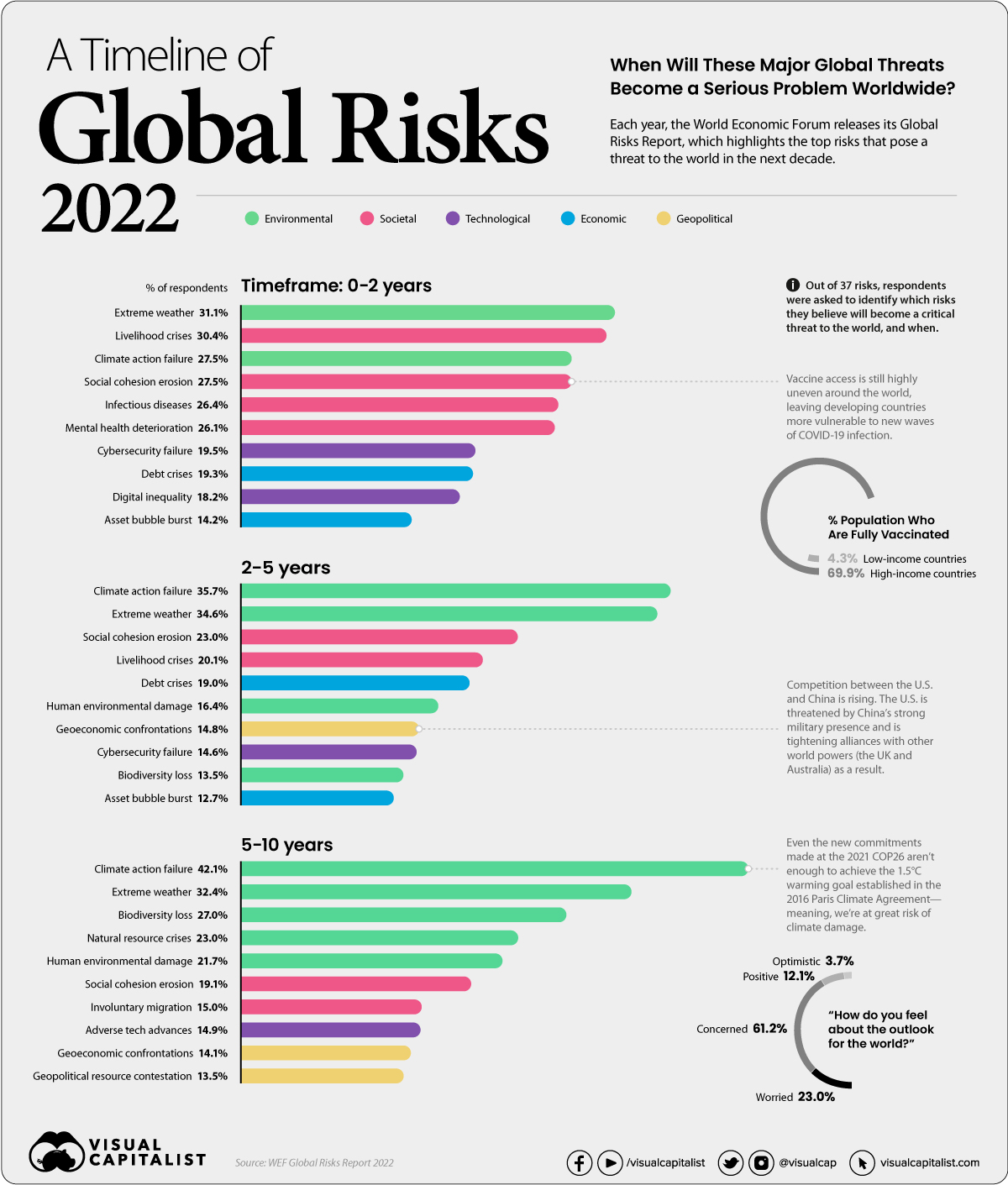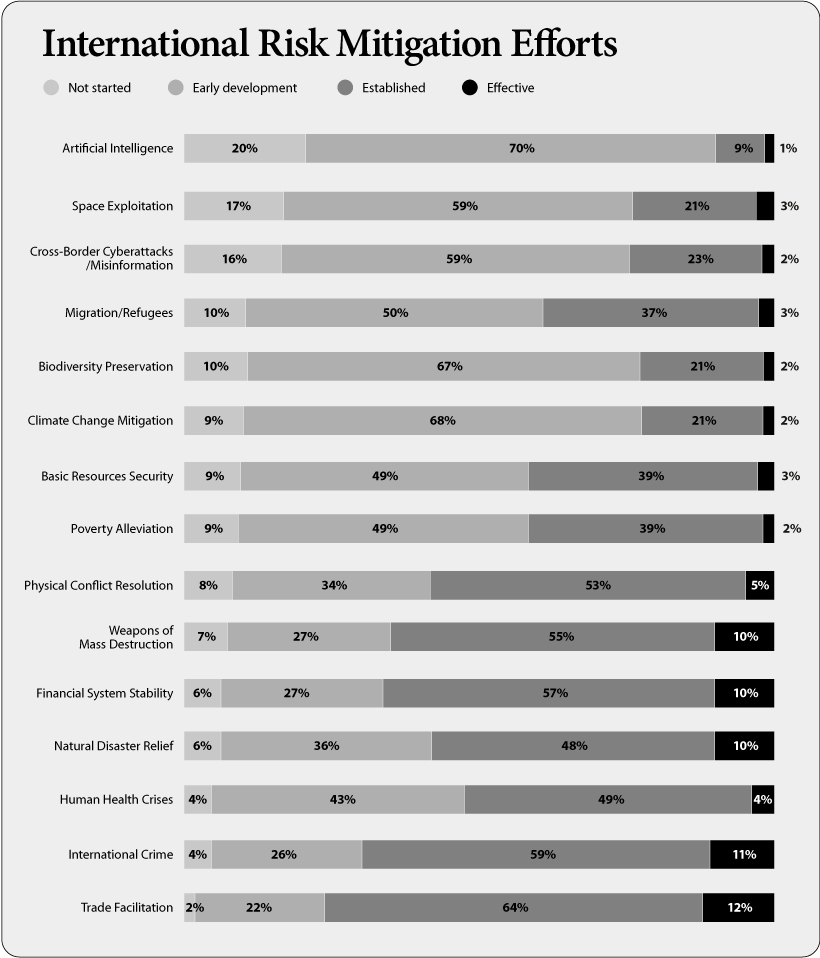@$$4$In the latest annual edition of the Global Risks Report by the World Economic Forum (WEF), it was found that a majority of global leaders feel worried or concerned about the outlook of the world, and only 3.7% feel optimistic. What global risks are leaders and experts most concerned about, and which ones are posing imminent threats?
This article is sponsored by Raymond Thomson. Go HERE to sponsor your own.
@$In the survey, respondents were asked to compare 37 different risks, which were broken down into five categories: economic, environmental, geopolitical, societal, and technological…[and] to identify when they believed these threats would become a serious problem to the world in the short-term (0-2 years), medium-term (2-5 years) and long-term (5-10 years). By categorizing global risks into these time horizons, it helps provide a better idea of the problems that decision makers and governments may have to deal with in the near future, and how these risks may interrelate with one another.
Let’s dive into the key findings from the report.
@$$…Efforts to…solve long-term issues will likely have negative short-term impacts on the global economy and society so risk mitigation efforts need to be in place as we work to reach net-zero and ultimately slow down climate change. Respondents to the survey were asked to identify which risks our world is most equipped to handle, and which ones they believe we’re less prepared for.

“Trade facilitation,” “international crime,” and “weapons of mass destruction” were risks that respondents felt we’ve effectively prepared for.
@$$$On the flip side, “artificial intelligence” and “cross-border cyberattacks and misinformation” are areas where most respondents think we’re most unprotected against.
Based on the findings from this year’s survey, WEF identified five lessons that governments, businesses, and decision-makers should utilize in order to build resilience and prepare for future challenges:
- Build a holistic mitigation framework: Rather than focusing on specific risks, it’s helpful to identify the big-picture worst-case scenario and work back from there. Build holistic systems that protect against adverse outcomes.
- Consider the entire ecosystem: Examine third-party services and external assets, and analyze the broader ecosystem in which you operate.
- Embrace diversity in resilience strategies: Not all strategies will work across the board. Complex problems will require nuanced efforts. Adaptability is key.
- Connect resilience efforts with other goals: Many resilience efforts could benefit multiple aspects of society. For instance, efficient supply chains could strengthen communities and contribute to environmental goals.
- Think of resilience as a journey, not a destination: Remaining agile and vigilant is vital when building out resilience programs, as these efforts are new and require reflection in order to improve.
The next few years will be riddled with complex challenges, and our best chance at mitigating these global risks is through increased collaboration and consistent reassessment.
 munKNEE.com Your Key to Making Money
munKNEE.com Your Key to Making Money
